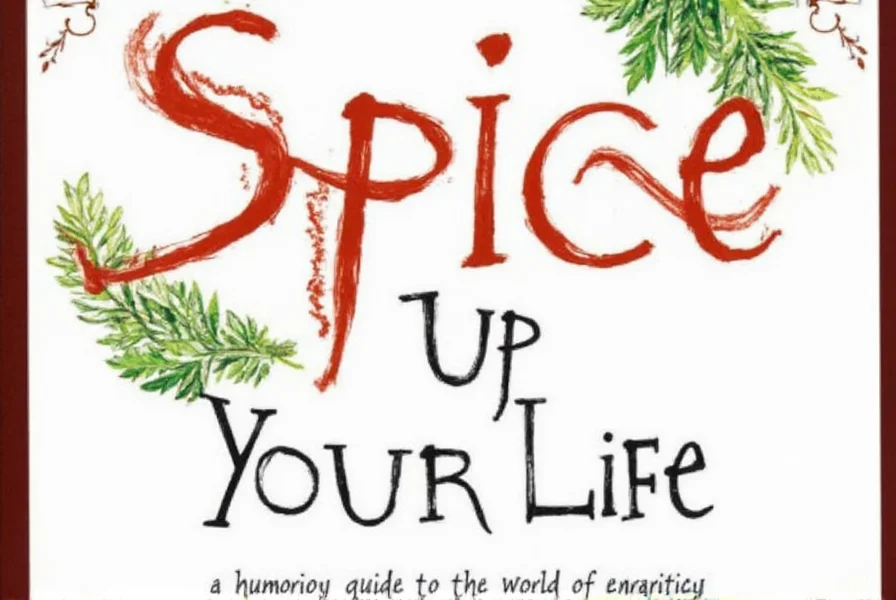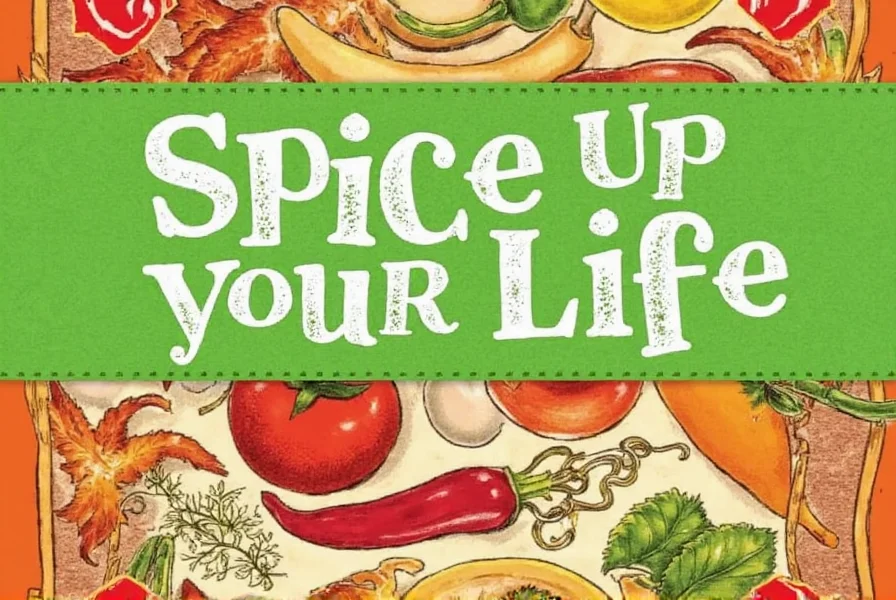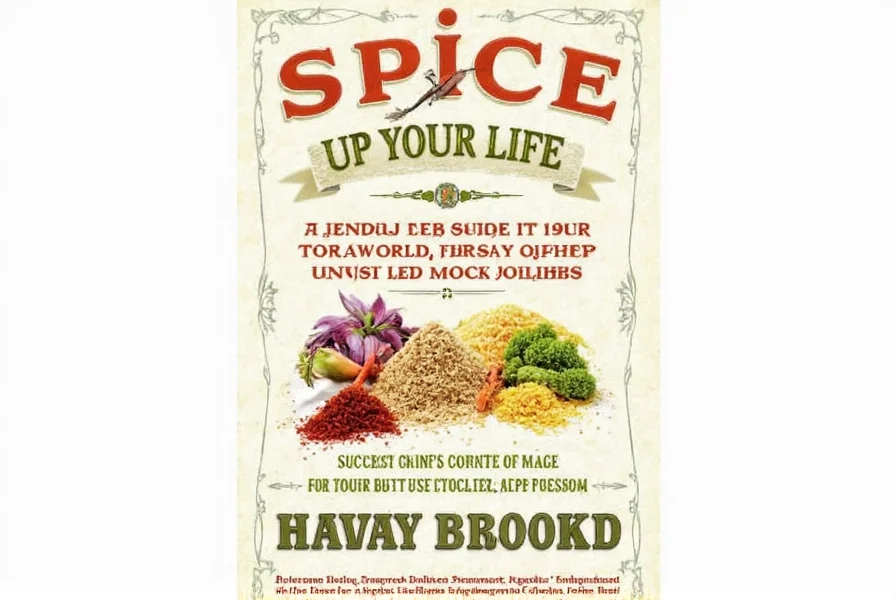Table of Contents
Introduction to Herbs and Spices
Herbs and spices are essential ingredients that transform ordinary meals into extraordinary dishes. This comprehensive guide covers over 50 types of herbs and spices, detailing their flavors, uses, storage tips, and more. Whether you're a beginner or seasoned cook, you'll find valuable information to enhance your culinary skills.

Herbs are typically the leafy parts of plants (like basil or thyme), while spices come from other plant parts such as seeds (cumin), bark (cinnamon), or roots (ginger). Both have been used for centuries in cooking, medicine, and cultural traditions. Properly used, they can elevate any dish from bland to brilliant.
Comprehensive List of Herbs and Spices
Below is a detailed list of essential herbs and spices, categorized for easy reference. Each entry includes flavor profile, common uses, and storage tips.
Common Herbs
- Basil: Sweet, slightly peppery flavor. Ideal for Italian dishes, pesto, and tomato-based sauces. Store fresh in water like flowers; dried in airtight container.
- Oregano: Earthy, slightly bitter. Essential for pizza, pasta sauces, and Mediterranean cuisine. Keep dried in cool, dark place.
- Parsley: Fresh, grassy taste. Used as garnish or in tabbouleh, soups, and sauces. Refrigerate fresh in damp paper towel.
- Thyme: Lemon-herbal notes. Perfect for roasted meats, stews, and soups. Store dried in sealed jar away from light.
- Cilantro: Bright, citrusy flavor. Key in Mexican, Thai, and Indian dishes. Refrigerate fresh stems in water.
- Rosemary: Pine-like aroma. Best for roasted potatoes, lamb, and bread. Keep dried in airtight container.
- Mint: Cool, refreshing taste. Used in teas, desserts, and Middle Eastern dishes. Store fresh in refrigerator or freeze in ice cubes.
- Dill: Feathery texture with anise flavor. Classic for pickles, fish, and yogurt sauces. Refrigerate fresh in damp cloth.
- Chives: Mild onion flavor. Great for baked potatoes, eggs, and salads. Store fresh in refrigerator or freeze chopped.
- Sage: Earthy, slightly peppery. Used in stuffing, sausage, and butter sauces. Keep dried in cool, dark place.
- Tarragon: Anise-like flavor. Essential for French cuisine, especially with chicken and fish. Store dried in airtight container.
- Bay Leaves: Subtle woodsy notes. Used in soups, stews, and braises. Store dried in sealed jar.
Common Spices
- Cumin: Warm, earthy flavor. Key in Mexican, Indian, and Middle Eastern dishes. Store whole seeds in airtight container.
- Cinnamon: Sweet, woody aroma. Used in baking, coffee, and curries. Keep in cool, dry place away from light.
- Paprika: Smoky or sweet depending on variety. Adds color to goulash, deviled eggs, and rubs. Store in airtight container away from heat.
- Ginger: Zesty, spicy kick. Used in stir-fries, teas, and baked goods. Refrigerate fresh root; store ground in airtight container.
- Cloves: Intensely aromatic. Ideal for holiday baking, mulled wine, and spice blends. Keep whole cloves in sealed jar.
- Nutmeg: Warm, nutty flavor. Used in custards, soups, and spice mixes. Store whole nutmeg for longer freshness.
- Allspice: Blend of cinnamon, nutmeg, and clove. Used in Jamaican jerk seasoning and baked goods. Store in airtight container.
- Cardamom: Floral, citrusy notes. Key in Indian chai and Scandinavian baking. Keep pods in sealed jar to preserve flavor.
- Turmeric: Earthy, slightly bitter. Essential for curries and golden milk. Store ground in airtight container away from light.
- Coriander: Citrusy, slightly sweet. Used in curries, soups, and spice blends. Store seeds in airtight container.
- Black Pepper: Sharp, pungent flavor. Universal seasoning for savory dishes. Store whole peppercorns for maximum freshness.
Exotic and Global Spices
- Saffron: Floral, honey-like taste. Used in paella and risotto. Store in airtight container away from light due to high cost.
- Star Anise: Licorice-like flavor. Key in Chinese five-spice and pho broth. Keep in sealed jar to maintain potency.
- Sumac: Tangy, lemony flavor. Used in Middle Eastern dishes and as a garnish. Store in airtight container away from moisture.
- Za'atar: Herb blend with thyme, sumac, and sesame. Perfect for flatbreads and dips. Store in cool, dark place.
- Harissa: North African chili paste. Adds heat to stews and marinades. Refrigerate after opening.
- Tamarind: Sweet-sour fruit paste. Used in curries and chutneys. Store in airtight container at room temperature.
- Gochujang: Korean fermented chili paste. Adds depth to marinades and sauces. Refrigerate after opening.
- Asafoetida: Pungent aroma that mellows when cooked. Used in Indian vegetarian dishes. Store in airtight container away from moisture.
- Szechuan Peppercorns: Numbing, citrusy heat. Essential for Chinese cuisine. Keep in sealed jar to preserve flavor.
- Fenugreek: Bitter, maple-like flavor. Used in curries and spice blends. Store seeds in airtight container.
| Herb/Spice | Flavor Profile | Best Uses | Storage Tip |
|---|---|---|---|
| Basil | Sweet, peppery | Pesto, tomato sauces, Caprese salad | Refrigerate fresh in water; dried in airtight container |
| Cumin | Earthy, warm | Curries, chili, tacos | Store whole seeds in airtight container |
| Cinnamon | Sweet, woody | Baking, coffee, curries | Keep away from light in cool, dry place |
| Ginger | Zesty, spicy | Stir-fries, teas, baked goods | Refrigerate fresh root; ground in airtight container |
| Saffron | Floral, honey-like | Paella, risotto, golden milk | Airtight container away from light |
| Sumac | Tangy, lemony | Middle Eastern dishes, salad dressings | Keep dry in sealed container |
| Za'atar | Herbaceous, tangy | Flatbreads, hummus, roasted vegetables | Store in cool, dark place |
Practical Tips for Using Herbs and Spices
- Start Small: Add spices gradually and taste as you go. It's easier to add more than to fix an over-spiced dish.
- Toast Whole Spices: Toasting cumin, coriander, or mustard seeds in a dry pan releases oils and enhances flavor.
- Use Fresh Herbs at the End: Delicate herbs like basil and cilantro lose flavor when cooked too long—add them just before serving.
- Proper Storage: Keep all herbs and spices in airtight containers away from heat, light, and moisture. A cool, dark cupboard is ideal.
- Pairing Guide: Rosemary pairs with lamb; thyme complements chicken; cumin works with beans and rice; cinnamon enhances both sweet and savory dishes.
- Substitution Tips: 1 tsp dried herb = 1 tbsp fresh herb. For stronger flavors like oregano or rosemary, use half the dried amount.

Buying Guide: How to Choose the Best Herbs and Spices
When shopping for herbs and spices, consider these key factors:
- Whole vs. Ground: Whole spices retain flavor longer. Grind them as needed for maximum freshness.
- Check Expiration Dates: Spices lose potency over time. If the aroma is weak, they're past their prime.
- Buy from Reputable Brands: Look for brands that source directly from farms and avoid additives.
- Smell Before Buying: Fresh spices should have a strong, pleasant aroma. Avoid any that smell musty or stale.
- Consider Organic Options: For herbs and spices used in large quantities (like turmeric or cinnamon), organic may reduce pesticide exposure.
Frequently Asked Questions About Herbs and Spices
What's the difference between herbs and spices?
Herbs are the leafy parts of plants (like basil, parsley, or thyme), typically grown in temperate climates. Spices come from other plant parts—seeds (cumin), bark (cinnamon), roots (ginger), or flowers (saffron). Spices usually have stronger flavors and are used in smaller quantities than herbs.
How long do herbs and spices last before losing potency?
Dried herbs retain good flavor for 1-3 years. Ground spices last 2-3 years, while whole spices can stay potent for up to 4 years. Fresh herbs should be used within 1-2 weeks. Test freshness by smelling—if the aroma is weak, replace them.
What are the essential herbs and spices every kitchen should have?
A basic spice rack should include: salt, black pepper, garlic powder, onion powder, paprika, cumin, oregano, basil, thyme, cinnamon, and turmeric. These cover most global cuisines and can be used in countless recipes from Italian to Mexican to Indian dishes.
Can I substitute dried herbs for fresh ones in recipes?
Yes, but with adjustments. Use 1 teaspoon of dried herbs for every 1 tablespoon of fresh herbs. Delicate herbs like basil and cilantro lose much of their distinctive flavor when dried, so fresh is preferable when possible. For stronger herbs like rosemary or thyme, dried versions work well in slow-cooked dishes.
How should I store my herbs and spices to maintain freshness?
Store all herbs and spices in airtight containers away from heat, moisture, and direct sunlight. A cool, dark cupboard is ideal. Avoid storing above the stove. Whole spices last longer than ground, so consider buying whole and grinding as needed for maximum freshness.
What are some unusual herbs and spices worth trying?
Expand your palate with sumac (tangy lemon flavor), za'atar (Middle Eastern herb blend), harissa (North African chili paste), tamarind (sweet-sour fruit paste), and gochujang (Korean fermented chili paste). These can add unique dimensions to your cooking and introduce you to new culinary traditions.
Conclusion
Mastering herbs and spices is the key to transforming everyday meals into extraordinary culinary experiences. With this comprehensive guide, you now have the knowledge to select, store, and use over 50 types of herbs and spices with confidence. Start experimenting with new combinations, and remember: the best cooks are those who aren't afraid to taste and adjust. Happy cooking!











 浙公网安备
33010002000092号
浙公网安备
33010002000092号 浙B2-20120091-4
浙B2-20120091-4